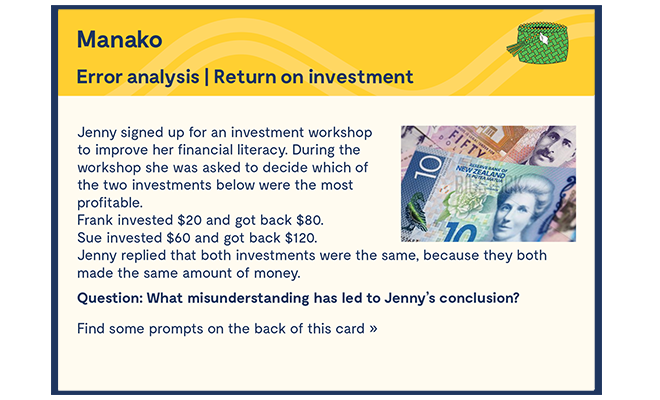Return on investment Step 4 | Resources and research
Resources
Further activities to develop multiplicative thinking can be found in the Learning Progressions resource (particularly pages 35, 37 and 43): Teaching Adults to Make Sense of Numbers to Solve Problems:
Research
As far as we can identify there is no specific research on teaching multiplicative thinking to adults. The studies below were conducted with children but will enhance conceptual understanding of the topic.
Clark, F., & Kamii, C. (1996). Identification of multiplicative thinking in children in grade 1-5. Journal for Research in Mathematics Education, 27, 41-51.
Hurst, C., & Hurrell, D. (2016). Investigating Children’s Multiplicative Thinking: Implications for Teaching. European Journal of STEM Education, 1(3), 1-11.
https://files.eric.ed.gov/fulltext/EJ1167493.pdf
Young-Loveridge, J. (2005). A developmental perspective on mathematics teaching and learning: The case of multiplicative thinking. Teachers and curriculum, 8, 49-59.
https://tandc.ac.nz/index.php/tandc/article/view/83
Young-Loveridge, J. (2005). Fostering multiplicative thinking using array-based materials. Australian Mathematics Teachers, 61(3), 34- 40.
https://eric.ed.gov/?id=EJ743571
Supporting Documents
Introduces and explains the ‘Make Sense of Number to Solve Problems' strand of the Learning Progressions for Adult Numeracy. A practical how-to guide, it covers topics such as how to use the resource and assessment, as well as a range of guided teaching and learning activities to use in class.
- 30 June 2008

